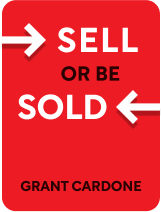

This article is an excerpt from the Shortform book guide to "Sell or Be Sold" by Grant Cardone. Shortform has the world's best summaries and analyses of books you should be reading.
Like this article? Sign up for a free trial here .
How do you get customers for your business? Why should you start with selling to people you know?
Businesses that figure out how to get customers maximize their networks and leverage cold calling. Your network is the list of people you already know that will be willing to buy from you, while cold calling involves reaching out to potential buyers that you don’t know personally. You should always start with people you know because they want you to succeed and you are already familiar with their expectations.
Read on to learn more about how to get customers for your business.
Finding Customers
Most salespeople focus the majority of their efforts on trying to sell to people they don’t know, and companies advertise to strangers and people who will never buy their product.
In fact, it’s far easier to get customers by selling to people you know, such as family, friends, and past customers, for two reasons:
1. They already know you. Your family and friends like you, know what you sell because they’re interested in your life, and want you to be successful. Your past customers like familiarity and trust you, so you can always get customers from your personal network.
2. You already know them. You know their expectations and what they like.
- For example, one day Cardone got a new product that he knew one of his long-time customers would love. Cardone asked him to sign the buyer’s order without even telling him what the product was. The customer signed it, confident that Cardone would never mislead him, and he was right—he loved the product.
Approaching people you know isn’t an imposition because setting them up with a useful product helps them, and buying it from you lets them help you. (If they don’t buy the product from you, they’ll buy it from someone else anyway.)
Build Your Network
To figure out how to get customers, you must build your network:
1. Make a list of everyone you know including family, friends, past customers, coworkers, and so on. Even include people you don’t get along with.
- For example, Cardone once got in touch with someone he’d fought with as a boy in high school. The man later bought a product from him.
2. Figure out where these people are and how you can get in touch with them.
- (Shortform example: If you went to college with someone, the alumni organization may be able to give you contact information or forward a message for you.)
3. Make contact. Ideally, set up an in-person meeting, but phone calls, email, and more creative solutions (such as the birthday card suggestion in the example schedule) work too.
4. Rekindle the relationship. The goal of the conversation is to reconnect, not to make a sale—that will come later. If selling comes up naturally as you catch up on each others’ careers, it’s fine to chat about it in detail if the other person is interested.
Each time you get customers and add each person to your network, the people in her network are added to your network too. You now have a connection to them through her, and if they need your product, she can put them in touch with you.
Cold Calls
If you do find yourself needing to connect with customers you don’t know, follow these steps:
- Select your prospects. This should be easy because once you’ve sold yourself on your product, you know what problems it can solve, and who might have those problems.
- Harness fear. You can use fear to guide yourself (whatever you fear most is what you should do) and motivate yourself (the best way to make the feeling of fear go away is to take action). The more you practice using fear, the more doing difficult things such as cold calling will become habit, and the more confidence you’ll gain.
- Dress professionally so you feel and project confidence.
- Visit potential customers in person because it’s easier to get customers by selling yourself and your product face-to-face.
Keeping the Pipeline Full
Your sales “pipeline” is a list of potential customers, and it empties in two ways:
- A customer permanently decides not to buy.
- You make a sale—as soon as a customer buys something, they’re no longer potentially going to buy it from you anymore.
You need to keep your pipeline full (the list of potential customers long) in order to keep selling. As soon as a customer exits the pipeline, replace her. (Too many companies and salespeople make the mistake of celebrating the sale instead of immediately trying to find a replacement.)

———End of Preview———
Like what you just read? Read the rest of the world's best book summary and analysis of Grant Cardone's "Sell or Be Sold" at Shortform .
Here's what you'll find in our full Sell or Be Sold summary :
- How your happiness and even survival depend on your selling ability
- The five steps to becoming a master salesperson
- Step-by-plans to lead the customer to make a purchase






